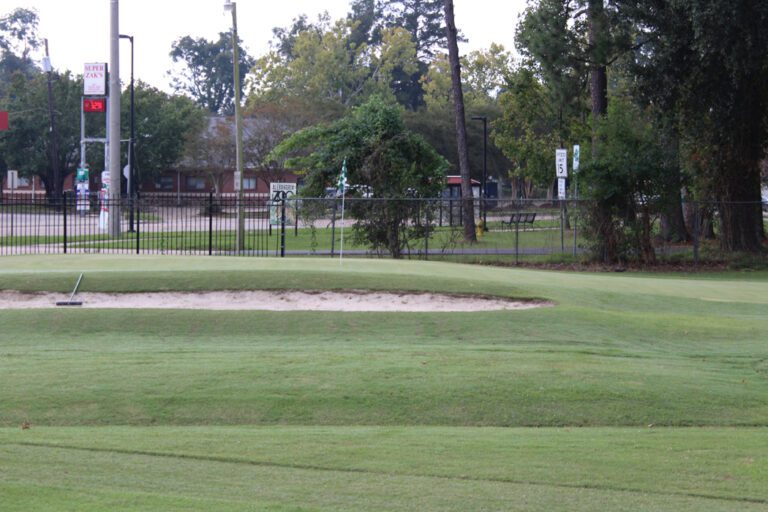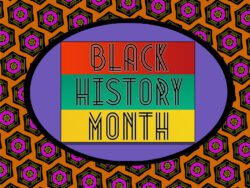by Doug Ireland
I drove by Bringhurst Park the other day, just to look and rekindle memories. The old ballpark frame and lights are there, but the stands and outfield fence are gone. The wonderful Zoo is, of course, still vibrant, and so is the par-3 nine-hole course known as “The Brink” – Bringhurst Golf Course, the oldest par-3 in the USA, dating back nearly a century, to 1927 or 1928 (nobody who played then is here now).
It’s cheaper to play now than it was then, (25 cents a week in its infancy, absolutely free nowadays). There aren’t many things that fit that timeline.
Once you’ve played there, whether you’re a serious and committed golfer or just willing to give it a try, you cannot forget it. Golf has that sort of tug in any dimension, but especially in these close quarters, when the sensation is a bit like riding a merry-go-round. It doesn’t take skill and it’s undeniably fun.
This piece really isn’t about the Brink, but about the overwhelming urge I felt to pay homage when I was winding around the nearby traffic circle. Most of that came from many – not enough – memories of rounds there, but some of it stemmed from golf in general on my mind, because of something specific and nearly unique – the stunning triumph of 20-year-old Alabama amateur Nick Dunlap over a field of pros at The American Express tournament last month in LaQuinta, Cal.
His victory was the first in 33 years by an amateur, not playing for pay, on the PGA Tour. It had happened only seven times previously. Ever.
It hit home in a couple of ways – contemporary and historically, for the Louisiana Sports Hall of Fame.
Dunlap won because Sam Burns lost. Burns, the Shreveport native and resident of Choudrant in Lincoln Parish (where he lives on the state’s top course, Squire Creek Country Club), was an All-American at LSU and won the Jack Nicklaus Award as the top major college collegiate golfer of the year in 2017.
Since then, he’s steadily climbed the professional ranks. Last fall, he was one of 12 on the United States Ryder Cup Team. He’s been on the leaderboard at major championships. At 27, he already has five PGA Tour wins, including the World Match Play last year in Austin. He’s won over $22 million in PGA Tour purse money – $3.5 in Austin last March.
Burns should have hundreds and hundreds of rounds to go on the tour, with every reason to believe more wins and success are ahead. He’s already an absolute lock to go into the LSHOF one day, probably after he turns 50 and is still playing, just eligible for the Champions Tour and as an active athlete, able to go on the Hall of Fame ballot, like one of his mentors, fellow LSU golfer and Shreveporter David Toms.
So for that and many other reasons, I root for Burns. I felt for him that Sunday afternoon when, tied for the lead with Dunlap with two holes remaining, his next two tee shots went into the water. It opened the door for golf history, but led to immediate misery for Sam, his immediate circle and fans.
But guess who was the first person to hug Dunlap after his clinching putt on the final hole? Sam Burns. And although there wasn’t any immediate comment from Burns that popped up on the world wide web – and these days, we are spoiled and want immediate reaction – the wait was worth it.
“The chance to win is always worth the risk of losing. It’s why we play week in and out. It wasn’t the finish I hoped for, but taking away a lot of good from this week,” said a social media post from Burns, who shot a career-low 61 in the second round to take the lead. “Big congrats to him on a historical win!”
And he closed with a line LSU fans will love. Burns started the week good naturedly. He paid off a bet with Alabama alumnus and Ryder Cup teammate Justin Thomas, hinging on the outcome of last fall’s LSU-Bama football game. No word on what JT would have had to do, but Burns had to alter his appearance. At the Ryder Cup, he played with U-S-A carved into his scalp. At LaQuinta, he played with R-T-R there – “roll, Tide, roll,” the battle cry for Crimson Tide loyalists. Looking back, he wrapped up his gracious take on Dunlap’s unlikely triumph with this promise:
“But this RTR will certainly be gone next time I tee it up.”
While Burns had my attention and compassion, I was also glad that Dunlap’s victory brought the spotlight to another LSU golfer, a man inducted in the Louisiana Sports Hall of Fame long ago, in 1978.
Fred Haas was the second amateur to win a PGA Tour event, the 1945 Memphis Open. That was remarkable enough. But even more indelible in golf history was the impact of his victory.
Byron Nelson had won 11 consecutive PGA events coming into Memphis. It’s a streak never achieved before or since. But Haas, a 30-year-old insurance salesman who had not yet turned pro, shot 18-under and won the tournament. He had a strong resume – including the 1937 NCAA championship and taking part in the Walker Cup world amateur event – and went on to win four more PGA Tour events after going pro, along with making the 1953 Ryder Cup team.
“Shucks, I was lucky,” he said. “No amateur has a right to win one of these things. Nelson and (Sam) Snead got off to a bad start, that’s all.”
A couple other things about Haas: his dad was a golf pro in Bastrop, after spending most of his son’s childhood as pro in Dermott, Ark., where he built the course. Young Haas reached the finals of the Louisiana State Amateur in Baton Rouge as a 17-year-old, and Senator Huey Long was in the gallery. He was so impressed he persuaded Haas to turn down a golf scholarship to Arkansas to help elevate a modest program at LSU.
Long asked Haas what it would take to win the national championship at LSU. The response: build a quality golf course across from Tiger Stadium. That didn’t happen immediately, but LSU did buy a local country club for $25,000 a couple of years later, and Haas did capture the NCAA title in 1937. Eventually, LSU built a golf course exactly where Haas suggested, and generations of LSU students and golfers have enjoyed it.
Haas, who married a Shreveport girl, played competitively into his 70s. He won two senior events, the PGA Seniors Championship and the World Seniors, in 1966. He made his home in Metairie, where he passed away in 2004 at age 88, five years after last competing in the PGA Seniors.
As for Byron Nelson? That 11-win streak Haas snapped was part of a collection of 64 PGA Tour wins by the affable Texan, universally considered one of the greatest golfers ever.



































